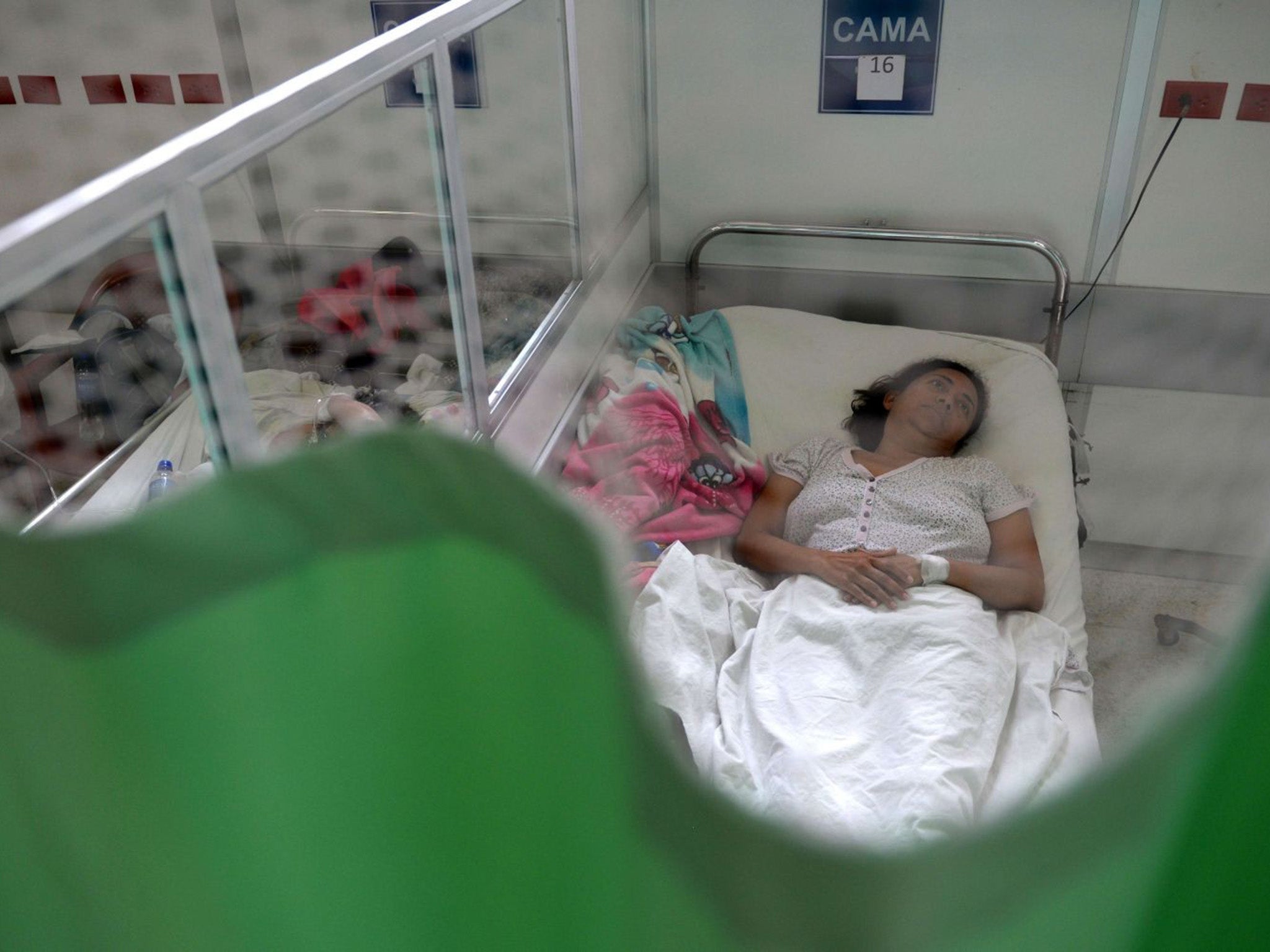Guillain-Barré syndrome: The other deadly disease lurking in Zika mosquitoes
Attention has focused on the danger of microcephaly – but the virus can also cause the paralytic and sometimes life-threatening condition

If you are a pregnant woman, and have not been living on another planet, it is likely you will be aware of the Zika virus epidemic sweeping the Americas.
You will be aware of the threat it could pose to your unborn child, were you to travel to Brazil or one of the other affected countries and be bitten by the Aedes Aegypti mosquito. Indeed, you may be aware of the latest Brazilian research, which appears to suggest Zika had been found in patients’ urine and saliva samples. Zika is symptomless in an estimated three-quarters of those infected and causes mostly mild effects – a skin rash, joint pain – in the remainder. That is, alas, not the full story.
While most focus has been, rightly, on Zika’s suspected link with microcephaly – a malformation of the foetus in which the brain fails to grow normally leading to the birth of babies with small heads who will mostly go on to have learning difficulties – the virus’s other threat has had less attention: its potential to cause Guillain-Barré syndrome.
Guillain-Barré is a rare and sometimes life-threatening condition in which the immune system attacks the nerves causing paralysis. Hundreds of cases have been linked with the Zika outbreaks in Brazil and other countries and scores of people have been hospitalised. Some have died.
Guillain-Barré can affect anyone. It often begins with numbness or tingling in the hands and feet, leading to muscle weakness which, if it spreads to the chest, can affect breathing and leave patients on life support. Most cases recover in weeks or months but in some paralysis or muscle weakness may last for years.

The syndrome was first described 100 years ago and is often linked with an earlier viral or bacterial infection which disrupts the immune system, leading it to attack the body. About 30 per cent of patients require ventilation but, with proper medical care, less than 5 per cent die. Experts from the Centres for Disease Control (CDC) in the US are urgently investigating its link with Zika alongside officials in Brazil.
It was first noticed in French Polynesia during the outbreak of Zika which swept the island group in 2013. French Polynesia has a population of 270,000 and there were 42 confirmed cases of Guillain-Barré, about eight times the normal number according to doctors.
It was only later that the link with microcephaly was spotted in French Polynesia, after it had appeared in Brazil and officials went back to check the records. The link with microcephaly did not emerge earlier because the population infected was too small for the rise to be obvious.
In Brazil, doctors have reported dramatic rises in cases of Guillain-Barré. At the public hospital in Niteroi, Rio de Janeiro, doctors said 16 people were ill with two paralysed by the syndrome, two weeks after they contracted the virus. The Hospital da Restauracao in Recife, in the north-east, treated a reported 94 patients with the syndrome during the rainy season, six times the normal number.
In the Couto Maia hospital in Salvador, Antonio Bandeira, an infectious disease specialist, reported 24 patients had been admitted with Guillain Barré between May and July. Zika had been “really bad” from February to July and had since disappeared, he said. In Maceio, also in the north-east, Wellington Galvao, a haematologist, treated 43 patients with Guillain-Barré in 2015, compared with 10 to 15 in previous years. “I estimate that Zika increases by about 20 times the probability that an individual can get Guillain Barré. It can be a nightmare for those who have it,” he was quoted as saying.
The association between Zika and Guillain-Barré is still just that – an association. Other spikes have been observed in Colombia, which reported the first deaths from Guillain-Barré yesterday, and Honduras.
However, there was a rise in cases in north-eastern Brazil in 2003-4 following an outbreak of dengue virus, also spread by mosquito. This highlights the difficulty of pinning down the precise cause.
Health officials are nevertheless taking the suspected link with Zika seriously. The WHO named Guillain Barré as a potential threat of Zika in the headline on its emergency declaration last Monday. Public Health England (PHE), followed suit. But PHE, like the CDC, confined its travel warning to pregnant women and the risk of microcephaly. It did not advise against travel because of the risk of Guillain-Barré.
Vincent Racaniello, professor of microbiology and immunology in the College of Physicians at Columbia University, New York, explained the discrepancy. “Guillain Barré resolves, microcephaly does not,” he said.
Nathalie MacDermott, clinical research fellow in infectious disease at Imperial College London, said: “In the vast majority of cases, microcephaly causes permanent neuro-developmental delay. We are talking about a significant impact on a generation of children. It may be that Zika causes Guillain-Barré but it may not be very severe. The vast majority of cases will make a full recovery.”
She added: “It is worth remembering the highest risk from travel is often not disease. It is road accidents.”
Join our commenting forum
Join thought-provoking conversations, follow other Independent readers and see their replies
Comments
Bookmark popover
Removed from bookmarks